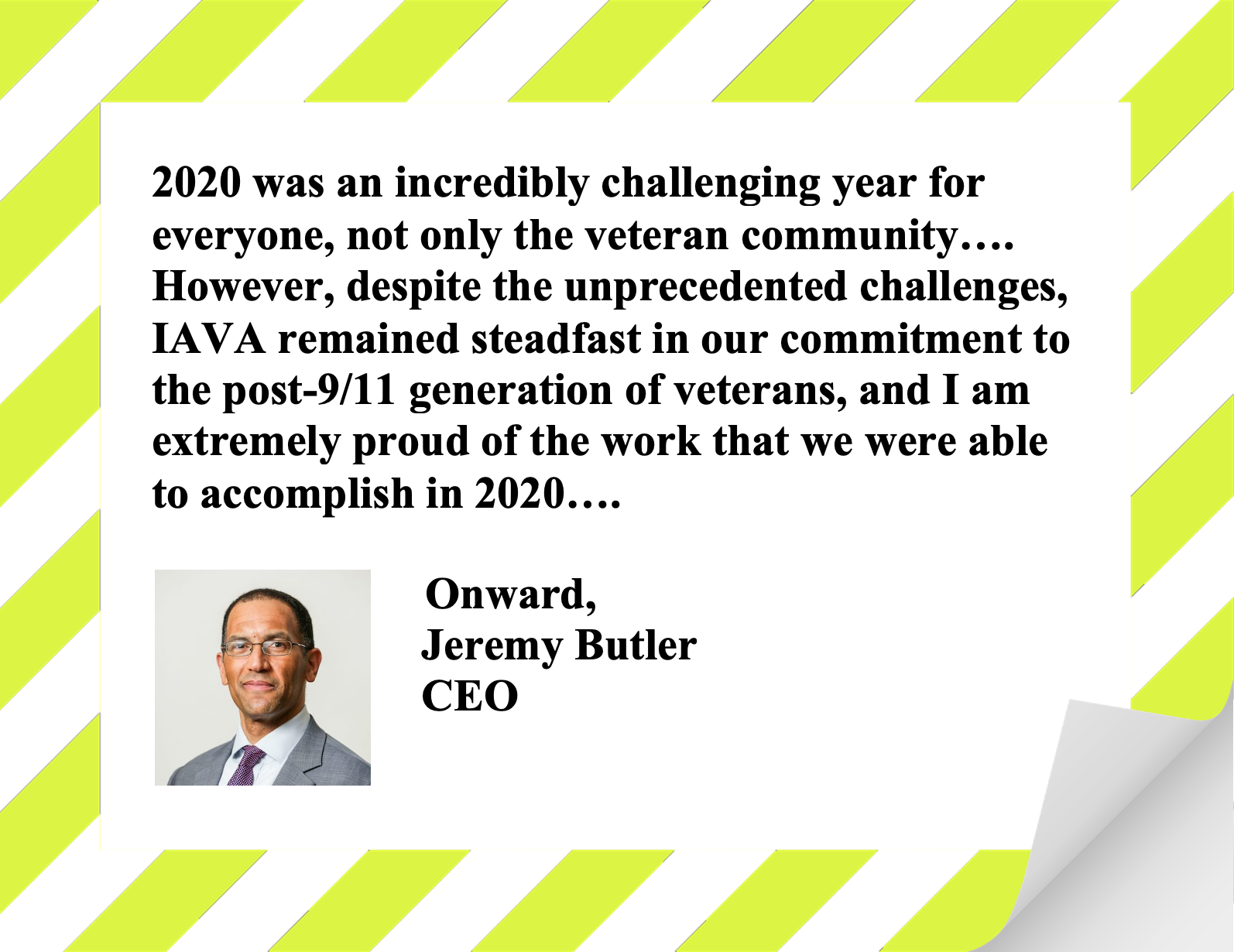IAVA's Policy Agenda for the 117th Congress
Combat Suicide among Troops and Veterans
Campaign to Combat Suicide among Troops and Veterans
For nearly a decade, IAVA and the veteran community have called for immediate action by our nation’s leaders to combat the crisis of 20 servicemembers and veterans dying every day from suicide. In the last two years, we made significant strides towards addressing this epidemic.
2020 was a groundbreaking year in mental health and suicide prevention. The passage of the IAVA-backed Commander John Scott Hannon Veterans Mental Health Care Improvement Act will result in critical reforms in how America combats the suicide crisis. Key provisions of this legislation will include the creation of a community grant program to help identify isolated veterans and provide mental health services, which is modeled after the extremely successful Supportive Services for Veteran Families (SSVF) program. These targeted programs are designed to identify the 14 veterans per day who die by suicide but are not currently participating in VA services and connect them to lifesaving resources. Additionally, this legislation will expand VA’s tele-health services at a time when veterans may be feeling more disconnected than ever before. These are critical improvements to VA care. But the work is not done.
According to the most recent VA data, the youngest cohort of veterans, post-9/11 veterans aged 18 to 34, have the highest rate of suicide. And while not always an indicator of suicide, mental health injuries continue to disproportionately impact the post-9/11 generation. In our latest member survey, a stunning 65% of IAVA members reported service-connected PTSD and over half reported anxiety (58%) or depression (56%). Meanwhile, the nation and VA struggle to keep up with the demand for mental health care and mental health care providers such as psychiatrists and psychologists, both of which are in the top 5 for VA staffing shortages.
Over the past few years, there has been much progress made in the realm of suicide prevention and mental health. The VA, DoD, and DHS’ plan for transitioning service members targets those in the post-9/11 generation at increased risk of suicide to engage with them before the moment of crisis. VA has leveraged tele-mental health care to expand its reach and predictive analytics to target the top 0.1% of veterans at risk for suicide. These reforms are critical to addressing the suicide crisis and IAVA remains dedicated to combating suicide.
IAVA's Approach
Improve Understanding around Suicide
Improve Understanding around Suicide
Every day, we lose an estimated 20 veterans and military members to suicide. In total, over 6,000 military and veterans will be lost to suicide this year alone if current trends hold. And veteran suicide is part of a larger epidemic in this country, and suicide rates have increased in half of the states in the past 30 years.
In the past 10 years, VA and DoD have invested millions of dollars to better understand suicide and improve prevention efforts. While we as a community are in a much better position today, there is still more work to be done.
About half of all deaths by suicide involve a mental health diagnosis. For the other half, environmental factors such as relationship stress, financial problems, or a crisis event can lead to a moment of crisis. And while we’ve invested fully in the understanding and treatment of mental health injuries, it is time to broaden the appurature and include community based solutions and continue to understand the factors impacting suicide.
IAVA's Recommendations
- Expand research into the factors impacting veteran suicide and encourage the VA to utilize the data at their disposal to expand understanding and research into veteran suicide and the factors impacting veteran suicide
- Ensure all clinicians and front-line workers have basic mental health care and suicide prevention training, including all primary care providers, both within the VA and the community care program
- Expand suicide prevention training initiatives such as SAVE and ASIST to provide relevant VA personnel and other stakeholders suicide awareness and prevention skills
- Encourage VA to publish large scale analysis of the suicide autopsies
- Expand predictive analytics programs that aim to engage at risk veterans before a moment of crisis
- Engage in a public awareness campaign around the relationship between lethal means safety and suicide
IAVA's Policy Priorities
Select a topic from the list below to learn about IAVA’s policy recommendations for the 117th Congress.

